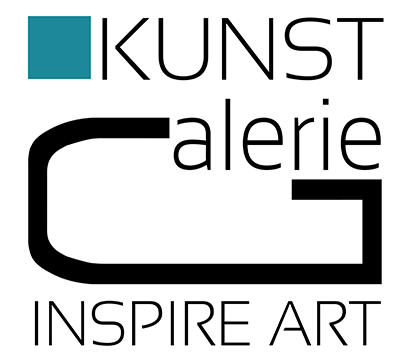Abstract Art
Abstract art: Non objective oil and acrylic paintings are an art trend of the 20th century
Artists have always been looking for “their” style and new ways to express themselves, which developed out of old styles and should correspond to the new times. By combining science, architecture and the art of gardening, philosophy, fashion and also politics over the centuries, new art styles have come into existence, which shaped the character of their epoch by means of special attributes and styles of painting. Abstract art is a trend that mainly emerged in the fields of painting, sculpture and graphic arts following the turn to the 20th century. To make a subdivision of abstract art is as hypothetical as the term itself. “Geometric abstraction” and “colour-related abstract art” may be contrasted with each other.
 |
| Whereas “gestural art” is compared with “emotional intuitive art”. While painters such as Picasso never embodied abstract art, some experienced art critics are fully looking at it today. We will explain the basic concept in more detail to you and choose distinct trends and present them in a comprehensive way. As follows you will receive the most important background information on acrylic paintings and abstract art. |
We hope our information will inspire you to study abstract art in more detail and, as the case may be, to acquire it in our Dresden Gallery. Navigation in the menu above will facilitate finding the suitable picture.
Separation of the figurative - Depiction and definition
A characteristic of abstract art is that the artist pays attention to a non figurative depiction of the world. Non objective art is separated from the figurative. It is no longer a real copy of reality. Both creatures and objects are not depicted or just implied in an objective way. In addition, already at an early stage the steady development of photo technology gave abstract art a strong boost. A completely new depiction of the real world was made possible and at times threatened to make figurative painting redundant. Here the visualisation of a free intellectual world by means of colours and forms also plays a role.
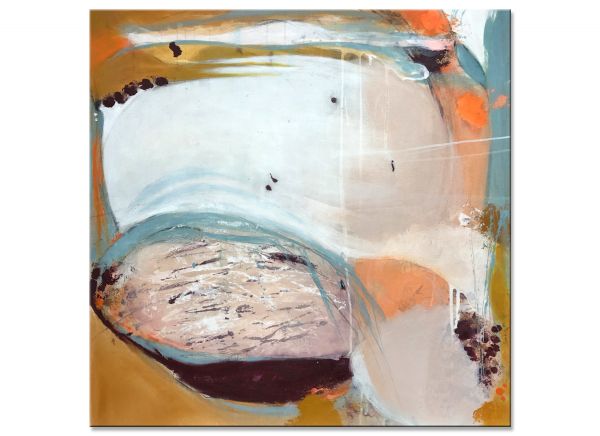 | 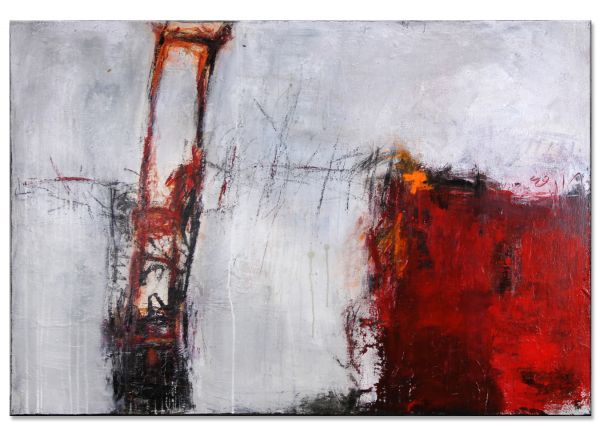 | 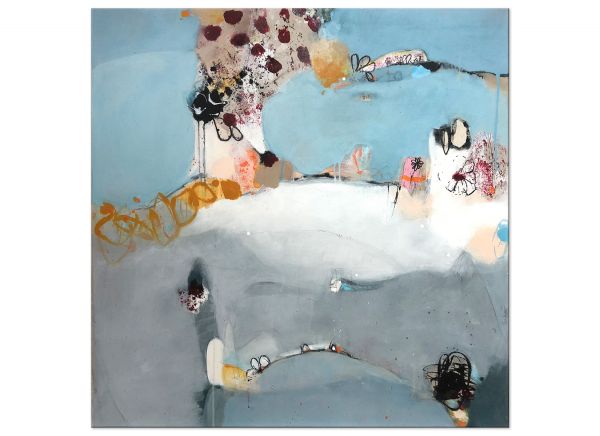 |
| Abstract Art | Buy abstract art | Abstract Acrylic Painting |
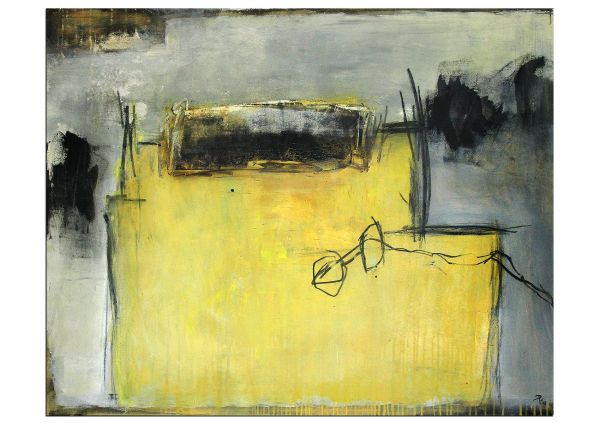 | 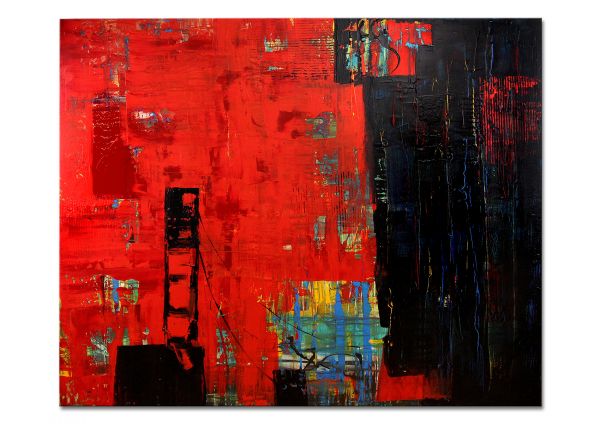 | 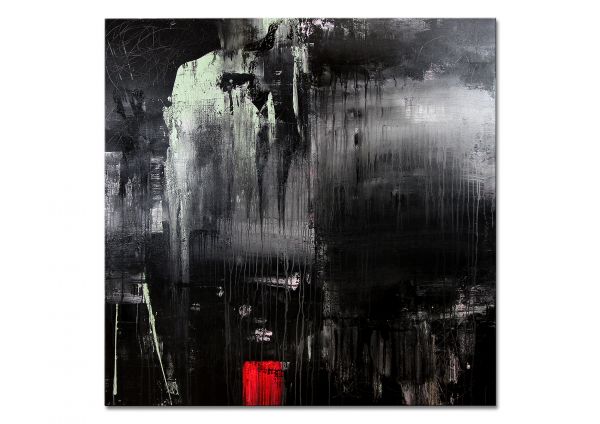 |
| Acryl Painting by Petra Klos | Buy abstract Art | Acryl Painting modern Expressionism |
Make the imaginary visible
At the beginning of painting, animals, humans and sceneries were depicted. Today the acquisition of abstract art is clearly more diverse and the perception is that a lot more is possible. By means of this stylistic device, the artist can make the imaginary and perceived visible. In doing so, his creativity is in the centre of attention of the creative process. The observer will be invited to understand the background of creation and form his own opinion of it. The artist or painter is free to provide assistance by offering the title of the work or consciously leaves the interpretation open. If you want to acquire an oil or acrylic painting, you should obtain relevant background information. The interpretation of abstract depiction is often difficult and leads even amongst art experts to very different results. You may acquire abstract art online or you mix the acquisition of art with a visit of the exhibition at our Dresden Gallery. We offer an interesting variety of selected abstract paintings, which will invite you to freely interpret them.
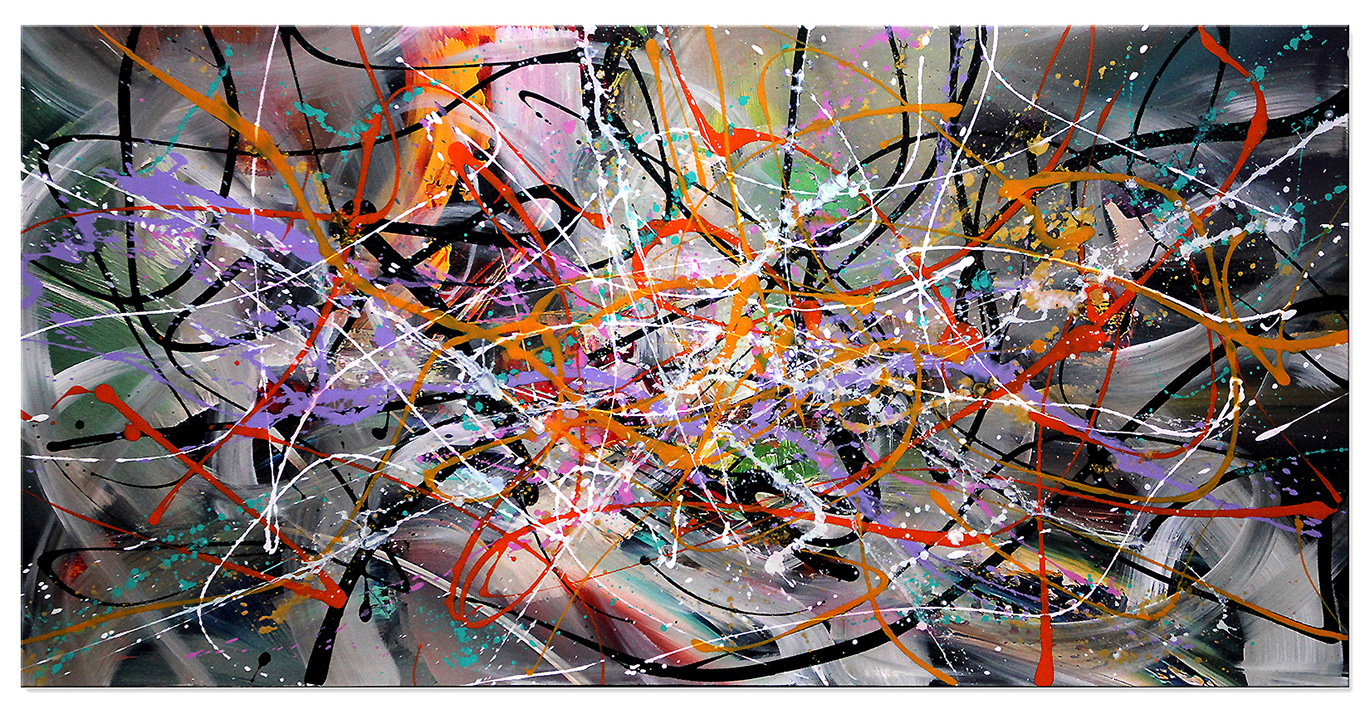
Image above: Timeless abstract contemporary art, here: multi-layered acrylic painting in dripping technique by Maler Dieu "Verbal Abstraction", 120 x 60 cm, acrylic framed, 2020, order online, shipping included, more works by >> Dieu
The pioneering protagonists
Like every style, abstract art does have its forerunners who perceived the world differently and therefore depicted it differently than it was done in the past. The painters Wassily Kandinsky and František Kupka are among the avant-gardists and are the pioneers of the non objective painting style. Especially Kandinsky is considered to be a prime example of the searching (and the expression finding) artist. During his career as an artist, he went through many phases and “invented”, adopted and developed styles.
Kandinsky also theoretically took a close look at the new trend in art. His book “On the spiritual in art” from 1911 presents a cutting-edge theoretical foundation of a new trend in art, especially in painting. The first abstract painting of the painter František Kupka, who is almost unknown today, dates back to 1911.
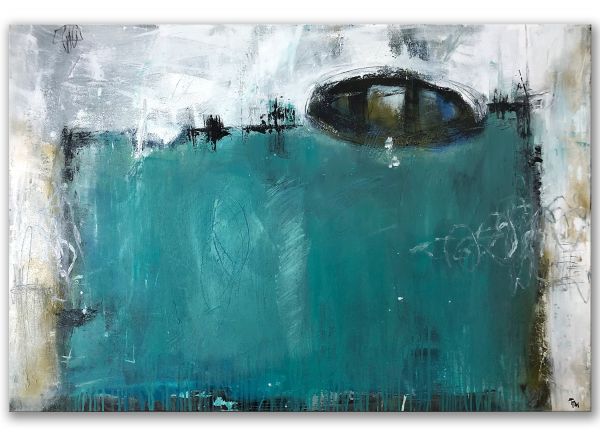 | 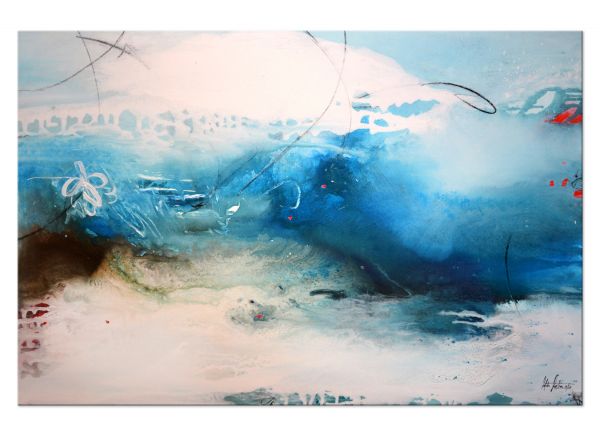 | 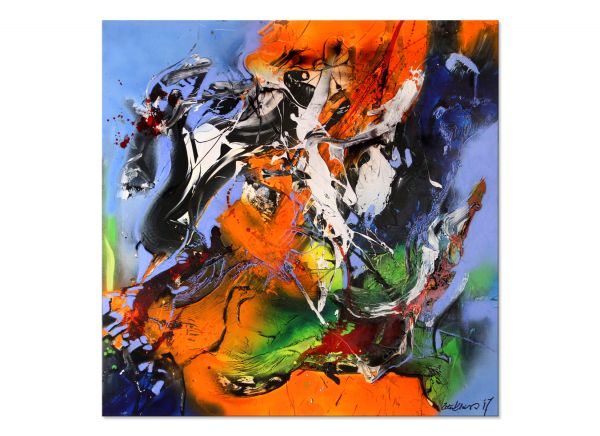 |
| "Island Traveling" Unique Painting Acryl on Canvas | "Wind in Senj", Acryl, 120 x 80cm (2020) | Painting abstract Art |
Some other unknown “representatives” of abstract art dating back to the turn of the century are Robert Delaunay, Piet Mondrian, Kasimir Malewitsch and Francis Picabia. According to Wikipedia, two main trends emerged from the beginning of abstract depiction: The one trend originating from expressionism and the other trend being represented by Wilhelm Nay and Hans Hartung, who both aimed at a complete separation from the figurative.
The emphasis was placed on colours, structures, compositions and forms. The second trend, which emerged at the same time, led to the geometric abstract art and was mainly influenced by cubism. Here geometric elements of style served to the depiction of the non-visible.
Famous representatives of this trend are the Dutch Piet Mondrian and the Russian Kasimir Malewitsch. Both developments distance themselves from the realistic depiction. In fact, the copy of the inner world of the artists or of his fantasy was important now. This offered the artist a whole new freedom in regard to his depiction.
This view, which is “focused on Europe”, unfortunately disregards the global development of art, e.g. in the Arab world or of indigenous people. To obtain a comprehensive view of the development of every genre, you should always try to pay due attention to the development of art.
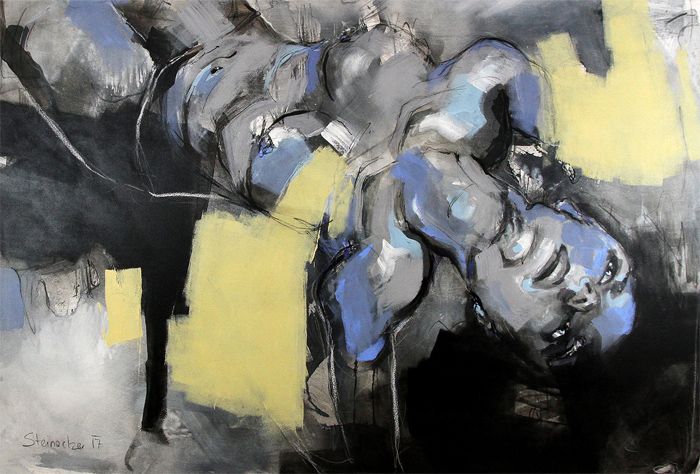
Above: Visible reality reduced: "Expectant" abstract figurative painting in acrylic on canvas by Michaela Steinacher, other works and murals by the artist Michaela Steinacher
What does this art form characterise?
Whereas in figurative painting the perceivable world is depicted the way it is, the representatives of abstract art have more creative freedom. The artist can visualise the ideal as well as his thoughts and feelings and act out his creative skills in an abstract way. Many authors reject a comparison of their work with the real world and point to their creativity as being the only element that helped to create the work. By depicting his inner world, the artist invites the observer to look into the message of his work and to interpret it.
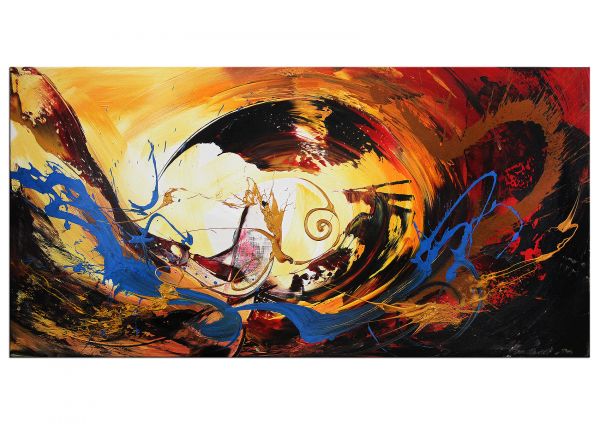 | 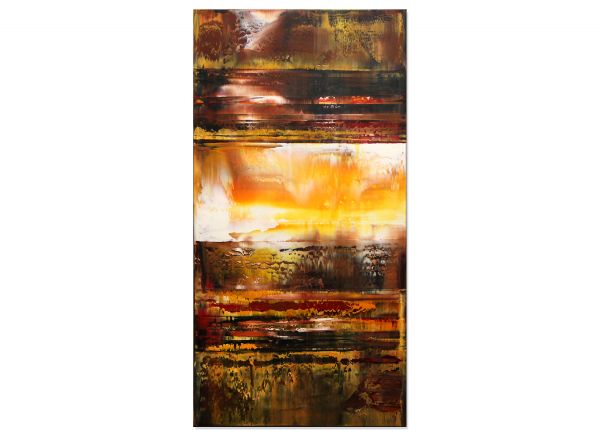 | 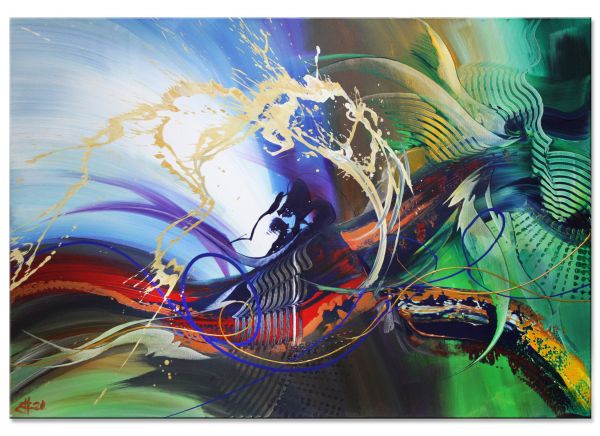 |
| Colour in the Centre - Acrylic Painting by Dieu | Dieu Abstract Subject | Modern Art Hand Painted |
Thus, everyone forms his proper and subjective opinion of the work and endlessly different views of its recipients are expressed.
Trends of abstraction and some of their representatives
To date abstract art has been a broadly diversified and continuously developing style.
Just by using new stylistic devices such as colour and materials, the artist and the observer are offered a large variety. Important is the abstract structure whose beginnings also date back to the beginning of the 20th century. A non-figurative new trend could develop from Art Nouveau with its many amorphous forms. Representatives, who have been known and honoured to this day, are Rudolf Belling and Hans Arp. The artists of the Russian constructivism such as Tatlin have strongly advanced abstract sculptures. Their topics were, amongst others, the interplay between the elements of space: In which relationships are geometric parts such as lines and surfaces in regard to space? How do these elements develop? And where to?
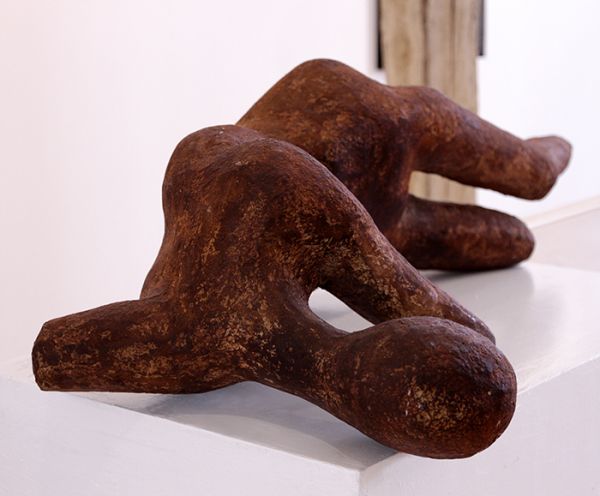 | 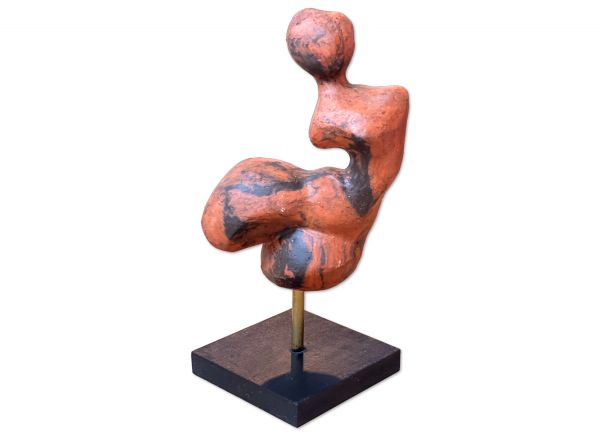 | 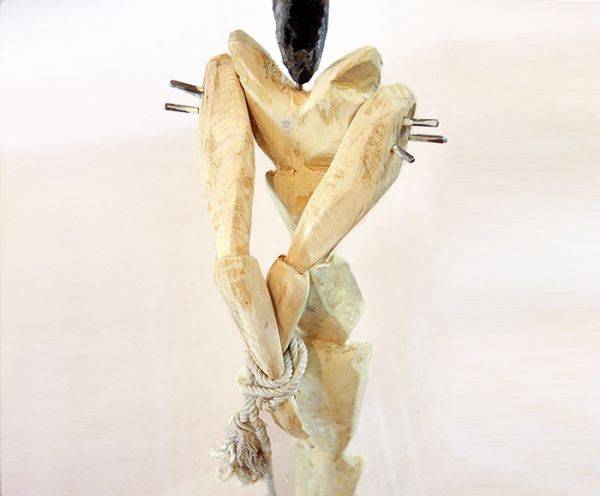 |
| Unique sculpture by Katrin Jähne | Abstract Sculpture - Edition | Abstract sculpture by René Theurich |
Abstract sculpture excerpt: : more sculptures
he development of the abstract sculpture was also global. Henry Moore advanced and exhausted abstract art both in regard to painting and sculpture. Contemporary artists such as Tony Cragg enlarged the diversity of abstract sculpture with their stylistic elements, which often implemented modern plastics. Remember the beginnings; abstract art since the turn of the century: Expressionism (Wassili Kandinsky) represents the diversity that was later completely renewed by, amongst others, Jackson Pollock (1912 - 1956). Ernst Wilhelm Nay (1902 - 1968) thinks himself to be a representative of the German “post war art” after 1945.
Here the development, that often led to a completely free form, went into the informal trend. The second trend was comprised of cubism and constructivism and was represented by Malewitsch and Mondrian. This trend was toward concrete art. To this day the German Willi Baumeister (1889 - 1955) has been an established representative. But also surrealists such as Yves Tanguy, Paul Klee (1879 - 1949) in his typical and distinctive way and Lyonel Feininger developed their own picture language.
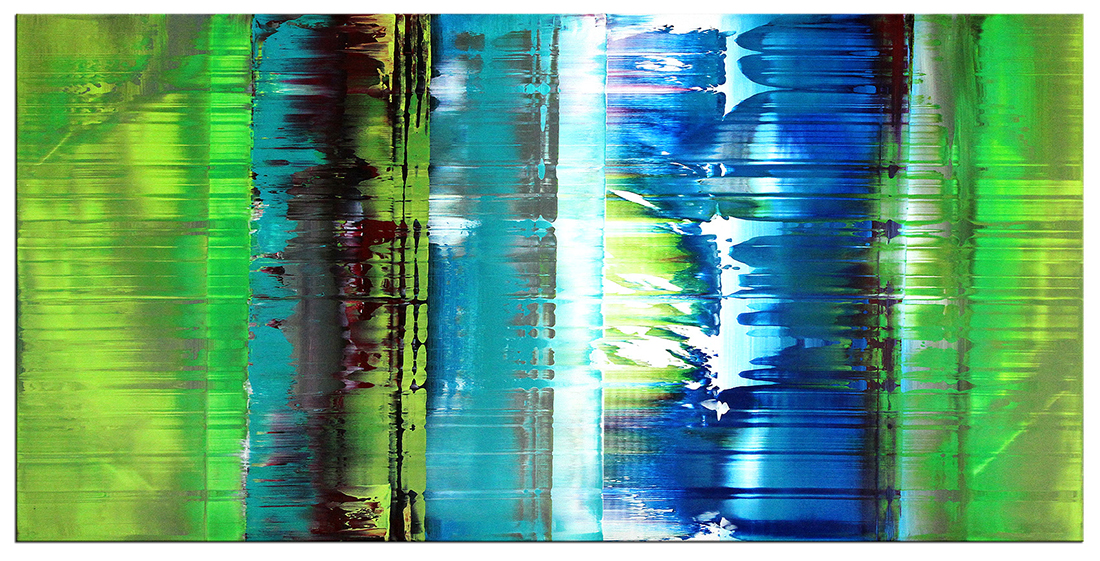
Strong colours - Original acrylic mural - Expressionism - Dissolution of the representational, which asserts itself in the composition: "Colloquium", other works by the artist Dieu
Abstract art techniques
Paintings and sculptures are still considered as the main trends of the abstract art trend. In regard to the single stylistic devices, in the course of time there have repeatedly been enormous changes made, which were mainly made possible by technological development of the materials. Oil painting as a main field of action experienced intense changes in style such as action painting that made Jackson Pollock known in the 50s and that made him world-famous thanks to the collector and gallery owner Peggy Guggenheim. Other techniques used for oil paintings are filling, the mixing technique (oil and other materials used as tools) as well as the casting technique, dripping (see Pollack), glazing and collaging. Nonetheless, abstraction has also found its home in aquarelle techniques. The different fields of graphic offer artists endless ways to express themselves, Mixed media combines different materials, colours and techniques to one work of art.
All real materials are used in sculpture today. In addition to traditional bronze, wood and steel, artists also use different types of stones, plastics, textiles, colours and natural materials such as plants.
Video and photo technology have also been further developed and independent and recognised sectors have been established. Here the name of June Paik (1932 - 2006) should be mentioned as a worldwide recognised artist of abstract art.
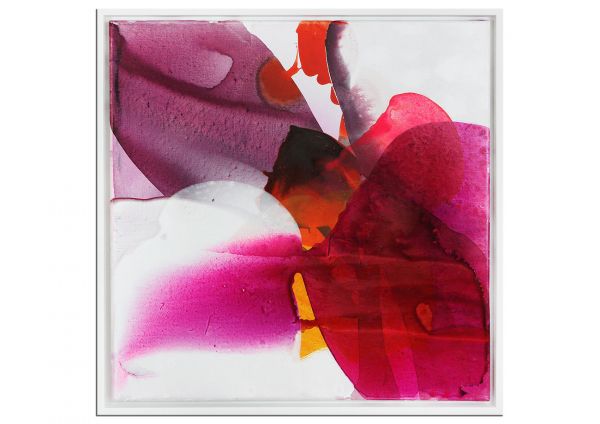 | 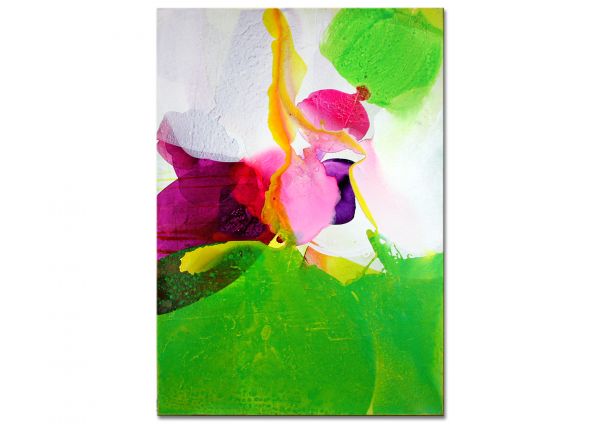 | 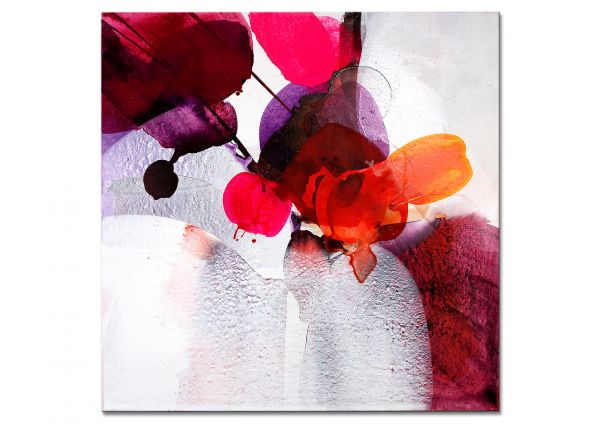 |
| Buy Non-Objective Art | Buy Abstract Paintings | Buy Abstract Paintings |
Acceptance and criticism
It is not an exaggeration to say that the art form of abstract art polarises: To date this artwork aroused and has aroused enthusiasm and also denial in regard to the audience and art criticism. The artist was and has often been denied any artistic ability in this not always objectively led discussion.
Non objective painting and its most important representatives
This question will always be subjectively answered. More than 100 years of the existence of this art form on different continents with so many different ways to be expressed make it difficult to establish a secure, manageable and enduring scale of importance in regard to the history of art. There is no complete list available. The list will only offer guidance. However, everybody probably agrees to name the following artists as being worldwide recognised representatives of abstract art: The Russian Wassily Kandinsky, the French Francis Picabia and Yves Klein, the US-American Willem de Kooning and Jackson Polloci and the German Gerhard Richter are outstanding representatives of abstract art.

Wall mural: Meticulous analysis of light: "Verwachsen", acrylic, 155 x 50 cm, 2017, you can find more works and wall paintings by the artist Dieu here: abstract art by Dieu
Where can abstract art be seen?
Abstract art has more than ever before been a part of our everyday life and cannot only be found in museums anymore. Today abstractly created sculptures, which are well worth seeing, are to be seen everywhere in the cityscape, but also the art in construction is often abstract. And the big variety of possibilities of reproduction such as posters allows for the creation and decoration with abstract art in almost all (private and institutional) interior space. However, you will not find any decorative posters in our gallery. In fact, we exclusively committed ourselves to original art. Many big collections in the world offer original works of respective artwork. Of course, institutions presenting exclusively temporary exhibits also show abstract art. Such exhibitions can be visited all over the world. Follow us on an inspiring trip:
The New York Museum of Modern Art offers a comprehensive collection of abstract art. Although other museums were established after the Second World War, people had collected already a lot earlier. Here must be named the Guggenheim Museum in New York which is located in the exceptional building designed by Frank Lloyd Wright and also the Peggy Guggenheim Foundation in Venice. Berlin is happy to accommodate the extensive collection of the New National Gallery in an important museum building designed by Mies van der Rohe, who is an icon of modern architecture.

Illustration (above): Abstract Art and Expressionism in the Kunstsammlung Nordrhein-Westfalen at the K20 in Düsseldorf, showing special exhibition of the Prodagonists
The China Art Museum in Shanghai also considers itself as an example of extensive temporary art collections.
An interpretation and a detailed regard
Abstraction as a style of free expression or non expression
As it has already been mentioned at the beginning, abstract art is a style, which has been in existence since the 20th century and it has been developed both in painting and also in sculpture. The main characteristic of non objective creation is the fact that on the one hand it only comprises of few allusions to the visible reality. On the other hand it neither creates any memories. Therefore, the visualisation of his thoughts and considerations appear to the artist, i.e. the spiritual becomes visible.
Furthermore, creativity offers the possibility to transport messages, but also to express criticism. Lately, it is said that abstract art is completely separated from the figuration and successively gives up the image of reality. Today we know that the original idea of abstract art remained undefined for a long time. It may be added that a separation from real objects as well as from forms and colours, which are available in nature, takes place.
Is it possible to freely interpret any abstraction?
The observer of non objective works is virtually asked to take a good look at the creation and to question the reasons for genesis. To understand or internalise the statement made by an abstract work, the observer must, in general, pay extensive attention to the work of the artist. If there is no guidance for the interpretation to establish a reference to reality, abstract art offers you the possibility to freely interpret on your own.
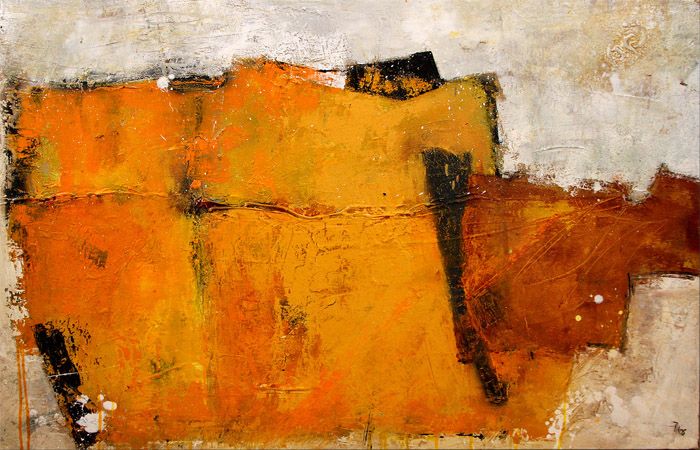
Colours as a means of expression: abstract expressionism in acrylic by Petra Klos, the figurative is dematerialised on canvas: "Field of Gold", view more murals by the artist
The abstract painter can work completely unrestrained by means of painting. This artistic freedom attracts the observer somehow. The fact that abstract works often cause the recipient no direct memories makes it possible, to make unimagined and unimaginable variations of form and colour visible and experience them. When examining abstract art, emotions are often aroused. According to studies, the question why this art style is so fascinating can be answered by saying that the sentiments continue to change even after a longer examination.
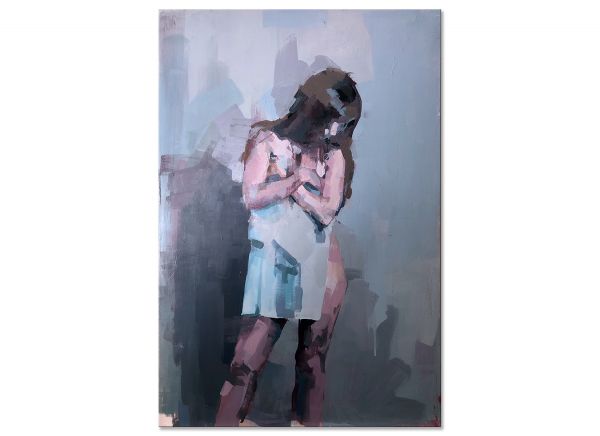 | 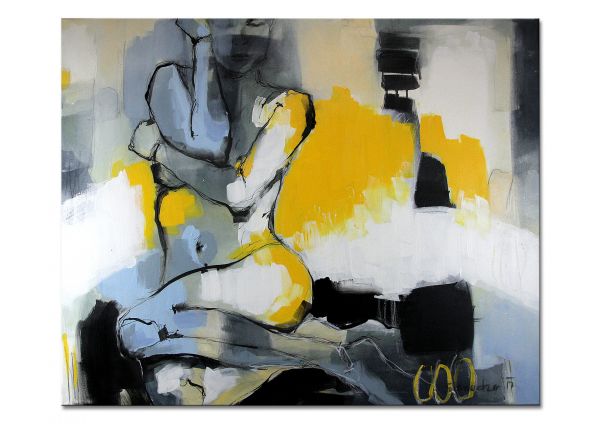 | 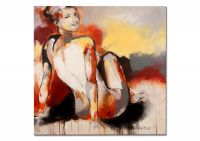 |
| modern Nude Art in Oil | Buy Abstract Nude Art | Reduced Nude Painting |
Make the invisible visible
Used forms of reality will only rarely be documented. A direct reference to nature and reality does, in general, not exist. Furthermore, abstraction clearly offers more possibilities in regard to creation than the illustration of figurative art forms. Today artists are rather concerned with the depiction of inner worlds that are more multi-spectral and more diverse than the visible outside world. When creating structures, the artist abandons reality almost completely.
Thus, the abstract painter only partly provides few clues to the visual existence. Exactly at this moment, your own and inner imagination is essential. Abstract art is commonly referred to as “non objective”. However, this interpretation is a very strict, perhaps completely academic interpretation of this style of art. The question remains problematic where a partial abstraction of this trend can be classified. A classification in abstraction and figuration does only partly exist or is completely missing.
Literature
From the multitude of libraries dealing with abstract art, only four books are singled out here without any claim to an evaluative order:
- Dietmar Elger: Abstrakte Kunst. Taschen, Köln 2008, ISBN 978-3-8228-5617-8
- Barbara Hess/Uta Grosenick (Hrsg.): Abstrakter Expressionismus. Taschen, Köln 2005, ISBN 3-8228-2967-6
- Bettina Ruhrberg, Karl Ruhrberg: Im Zeichen der Abstraktion. Zur westdeutschen Kunst 1945–1960. In: Ferdinand Ullrich (Hrsg.): Kunst des Westens. Deutsche Kunst Jahre 1945–1960. (Katalog der Kunstausstellung der Ruhrfestspiele Recklinghausen Jahr 1996). Wienand Verlag, Köln 1996, ISBN 3-87909-489-6
- Susanne Anna (Hrsg.): Die Informellen – von Pollock zu Schumacher. Hatje Cantz, Ostfildern 1999, ISBN 3-89322-689-3
canvas color cookies prints geometric page prints technologien tate colors room popular cubism photography abstraction color page prints technologien abstraction color page geometric page Malevich London featured Paris clear etsy technologien Bauhaus shapes watercolor canvas color cookies prints technologien rothko misic ink ideas late circle surrealism price doesburg David Gray canvas color cookies geometric page prints technologien
